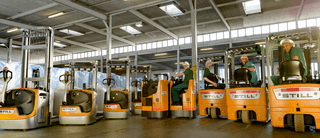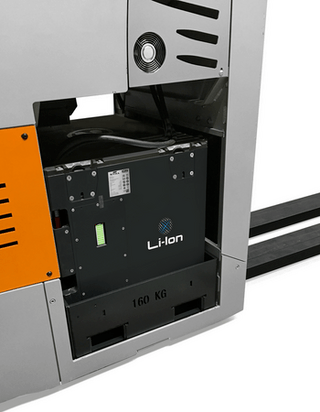How lithium-ion batteries are powering greener energy consumption in warehouses

Energy is fast becoming the hot topic in warehousing and logistics. With Europe aiming to be working carbon neutral by 2050 and the UK government implementing their “Net Zero” strategy by 2030, energy – how it’s produced, how it’s consumed and the costs for both – is a big cost factor in industry and one that cannot be ignored.
According to a recent report by CBI, energy prices for medium-sized users are predicted to grow by almost 30% in the next five years which will have huge cost implications for businesses. Energy efficiency is especially important for warehouses because, on top of requiring significant amounts of energy to operate, the logistics industry is growing so quickly. Energy consumption has to increase to facilitate growth, but without efficient working practices any increase in profits is going to be dented by huge energy bills.
So, what can be done by warehouses looking to utilise greener energy sources while maximising efficiencies and driving down energy consumption? In this article, we’ll look at one answer: lithium-ion battery (or Li-Ion, as they’re known) powered forklifts. We only need to look at the automotive industry to see how lithium batteries are shaping the future of automotive power. The forklift truck industry closely follows the automotive industry, with new and emerging technologies being adapted for logistics, and the push to electric – Li-Ion battery powered – cars will probably not have gone unnoticed by any of us.
Availability and Usage
Li-Ion batteries are now widely available as a cost-effective power-source for warehouse vehicles. Smaller than traditional lead acid batteries and more widely accessible than hydrogen-powered fuel cells, Li-Ion powered trucks offer both green energy options when electricity comes from renewable sources and increased efficiency in operation thanks to their low charge time and high-performance output. It is estimated that one hour of charge time equates to approximately three hours of vehicle use when it comes to Li-Ion forklift batteries, and power does not drop over time as with lead acid batteries, which means trucks can perform at maximum efficiency throughout a shift.
Li-Ion batteries also have a much shorter charge time than lead acid batteries and can be boosted without damaging the battery itself. In the age of 24/7 operations, this can be vital because it means that warehouses don’t need to have fleet of vehicles out of action for huge amounts of time while they charge, nor do they need to have costly and time-consuming charging cycles in place in order to keep vehicles running.
Nor do employees need to worry about swapping vehicles mid-shift or having to replace their vehicle batteries part-way through their working hours. Instead of removing batteries for recharge and fit a new one (something that itself requires specialist training due to the potentially hazardous material involved), all they need to do is plug in their vehicle via an easily accessible external socket or fit an “on-the-go” charging pack.
Investment and operating costs
While Li-Ion batteries are more expensive than lead acid batteries (they’re currently around two-three times the cost), they have at least twice the lifespan, so an upfront investment is quickly returned. The energy efficiency of Li-Ion batteries and the performance of electric trucks can reduce energy consumption by up to 30% compared to lead acid, and the use of fleet management software can increase these energy efficiencies further.
Because Li-Ion batteries also require less charge time for driving, businesses can be more selective about when their trucks are charged. A fleet of 30 traditional battery powered trucks will need a full, uninterrupted eight hour charge (or more) for a shift, so the fleet manager may not have a lot of choice about when the batteries are powered up. The same number of Li-Ion battery powered trucks will need far less charge time, so options then become available to charge at off-peak times when energy is less expensive.

Future-proofing
Unlike traditional lead acid batteries, Li-Ion batteries are being heavily invested in as a viable and cost-effective solution for greener energy so new technologies are being developed all the time. While some businesses may be reluctant to invest in new technology for fear of it quickly becoming obsolete, Li-Ion batteries are already established as the future of transportation. According to The Economist, lithium battery prices have fallen 98% in the last 30 years and are becoming more affordable as time goes on.
As the ever-increasing push towards energy efficiency and greener, renewable energy sources begins to gather steam, very few industries or individuals are going to be able to simply continue as normal. Warehouses are being forced by necessity to adapt to these changing policies, while at the same time seeking to improve performance output and efficiency. Li-Ion battery-powered trucks could provide a solution that addresses both needs.
Comments
No comments
Subscribe to our blog!
As soon as a new article is published, we will notify you! You can unsubscribe at anytime.

Leave a comment